Clamps, but…
Today we will talk about tools for miniatures again, those little helpers I use almost constantly, miniature jigs and clamps.
Whenever I look in my drawer full of clamps I remember my visit to Downscale Designs near Waterville, Maine. Andy, the owner, had an amazing wall full of clamps of all sizes. I asked if he thought he had enough.
He pointed at this project, a miniature timber frame house that he was installing the roof onto. That’s when he said those timeless words: “You can never have enough clamps.” I count at least 20 on this build!
Not Just Clamps
But clamps aren’t the only way to hold your work in place while glue dries. Especially for miniature furniture items that need to be square, I love my magnetic jig.
The blue thing is the sheetmetal skin of a cabinet door that was removed from a chemistry lab. It is a thin, square piece with bent edges and has a baked enamel finish on both sides. Perfect size for my bench top.
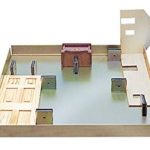
You can also buy a metal jig and magnets several places online (my preference is Micro-Mark (NOT an affiliate link)) and it looks like this. I think this one is kind of small, but it should work for THoM kits. It is about 10.25″ square and comes with 8 magnets as shown. The magnets are very strong and ca be used in many positions (I use my set a lot). The edges are safety coated and fairly high. I hope to do a review on this jig in the future. Having both a large and a small magnetic jig doesn’t scare me 🙂
Make Custom Jigs?
To make and keep things straight I use some commercial brass bar stock and some good, strong magnets. I also (sometimes) use Lego™ bricks to make a custom square in just the right size! This one had to be the right height for the side panels. This one I put a laminated sheet of paper under since the glue was going to ooze out onto my jig otherwise. Best not to glue your work to your jig! Get creative with your miniature jigs and clamps.
Make Sure to Have Plenty
I hate it when I run out of clamps. It usually means that the work has to stop. I had five clamps in use on this floor installation in that breadbox. I was also using aluminum flat stock, brass bar stock and some wood trim to extend the reach of the clamps. Right after this I bought more clamps.

Those little black bar clamps are amazing. I bought two from Sears, then picked up two more at cheapo tool store, then got two more soon after. There’s three of then in use here, but I’ve used all six at once several times.
There are also small spring clamps and tiny ratchet clamps, which I employ for holding flat or small things in place. I also have a right angle clamp for gluing a 90-degree corner, but a more often use the magnetic jig for wood gluing and save the right angle clamp for H.O. scale buildings where I’m working with polystyrene.
Of course, you don’t always need a purpose-made tool for the job.
Pressure and Stillness
It’s great to have miniature jigs and clamps available for your projects, but what if something odd or large or round or delicate needs to be glued? Stay flexible. What you need for gluing is pressure on the joint and stillness while it dries. It doesn’t matter what it looks like, just that it works, right.
This is not a good looking gluing jig. Well, it doesn’t look like a gluing jig or clamp at all, does it? It looks like a case of water on top of a roombox. But what we actually have here is pressure and stillness.
The water is heavy, so that’s pressure. And the whole thing is sitting securely on a workbench that is on a basement floor. Very still. It worked like a charm! There was wood glue in the wall joints at both the top and bottom of the box and I had no clamps big enough to span the 15″ from top to bottom, so this is what I came up with.
Is It Square
There is one more question to answer, beyond having pressure and stillness. When building houses and furniture, things need to be fairly square. That usually means having 90-degree angles all around.
In this image I had just taken a Tidewater Virginia Fireplace (kit 40020) out of the gluing jig. I had magnets on the inside and on the outside and was gluing both side pieces. It came out very square, but that wasn’t by chance.
This little measured square (again from Micro-Mark) is outstanding for checking your 90-degree angles. Your eyes might be calibrated, but mine definitely are not, so I rely on a neutral third party when determining is a corner is precisely 90-degrees. Helps to avoid fights with opposing sides later, for sure.
Do you have interesting Miniature Jigs and Clamps that you rely on when you need a third (or fourth or fifth or eighth) hand with a project? I’d love to hear about it in the comments!
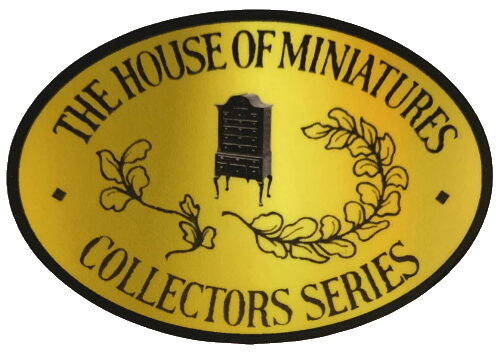
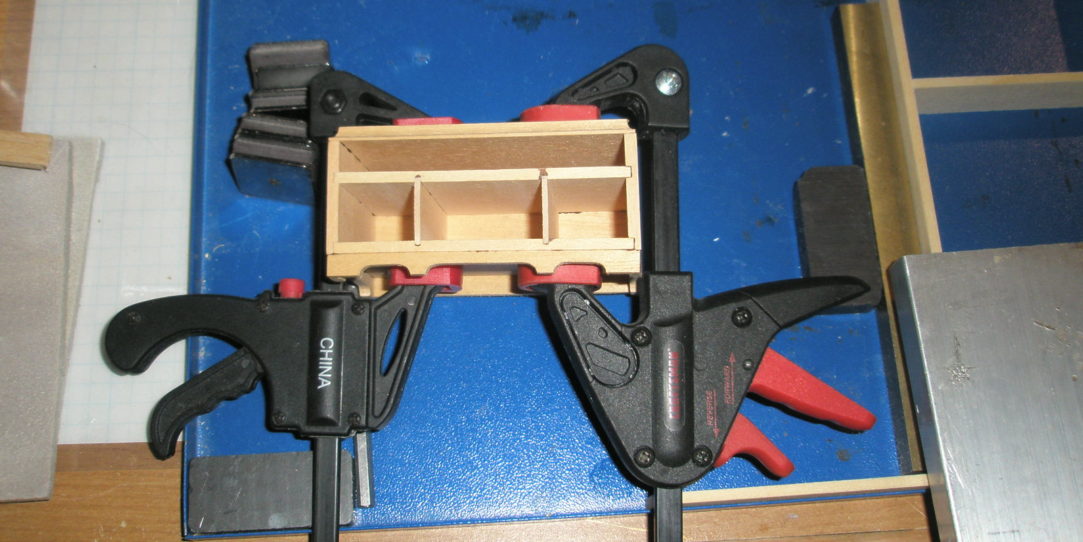
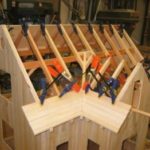
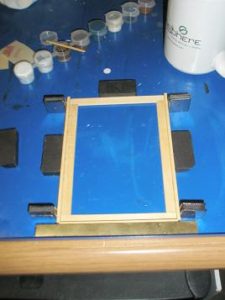
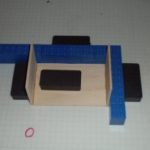
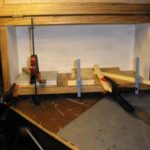

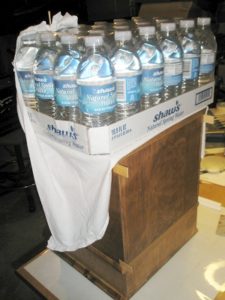
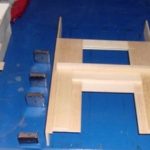
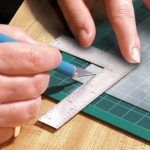
4 comments
Comments are closed.